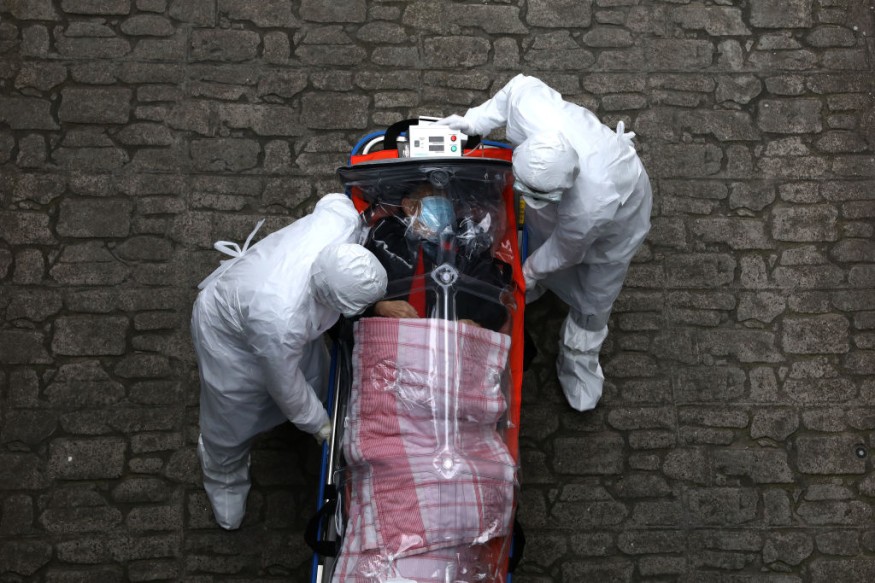Even though the COVID-19 contagion managed to carry on in certain areas of the planet, the mortality rates due to this epidemic have reduced. Even though they have a minor infection, many people who are healing from COVID-19 appear to have certain problems.
The definition of long COVID is increasingly gaining acceptance. After two successive unfavorable COVID-19 test outcomes, not only do patients appear to experience prolonged or chronic effects but mostly because rehospitalizations and fatalities continue to occur due to post-COVID complications.
Recent research reported in JAMA shows that the greatest danger to the wellbeing of a COVID-19 patient is likely to be in 10 days following hospital discharge, so during this early stage of rehabilitation, careful treatment and health condition tracking of patients is essential.

Max risks of morbidity and mortality post-COVID
Researchers centered at the University of Michigan and Veteran Affairs Ann Arbor Healthcare System carried out the report. Noting that there was insufficient evidence on initial results following hospitalization, the researchers set out to calculate among COVID-19 patients the risk of readmission, reasons for readmission, and incidence of death after hospital discharge.
They used two ways to achieve this:
First, they obtained data from 132 VA hospitals on the hospitalization of veterans with COVID-19. This research involved patients hospitalized between March and June 2020 and recovered between March and July 2020.
Second, because of non-COVID associated pneumonia and cardiac disease, they found veterans injured over the same years. The researchers concentrated on hospitalization length results, the utilization of an intensive care unit (ICU), dependency on intrusive mechanical ventilation, and vasopressors' need (drugs used to treat shallow blood pressure).
Readmission and mortality rates were then assessed among COVID-19 survivors up to 60 days after discharge, and the danger ratios of readmission were also determined for 10, 20, 20-40, and 40-60 days after release.
Popular grounds of readmission and death
The researchers gathered data on 2,179 veteran COVID-19 hospitalizations, 678 of which were administered in the ICU, 279 had to access mechanical ventilators, 307 got vasopressors, and 1,775 survived the illness to be released eventually. 354 (19.9 percent) of these survivors were readmitted, 162 (9.1 percent) died, and 479 (27 percent) were found to have been admitted to hospital or died within 60 days of being released.
COVID-19 reinfection, heart disease, sepsis, and pneumonia were the most important factors for the readmission and death of survivors. More than 22.6 percent of these patients had to be administered in ICUs after readmission, 7.1 percent were properly ventilated, and 7.9 percent were taking vasopressors.
More than 1,800 people had pneumonia, and 4,269 had heart disease in the other cohort of veterans of non-COVID hospitalizations, of which 97.8 percent and 98.3 percent recovered, respectively, and were released following surgery. The clinical results of 1,799 patients with pneumonia and 3,505 with heart disease are contrasted to those who survived COVID-19 and were discharged after removing patients who died.
Researchers contrasted these two cohorts of remaining patients and observed that survivors of COVID-19 have lower 60-day readmission or mortality rates than those with pneumonia or heart failure. However, relative to these same individuals, COVID-19 survivors have the highest hospital admission rates and/or mortality during the first 10 days after release.
Urgent requirement in the first 10 days following discharge for vital treatment
While the prognosis for 60-day post-discharge COVID-19 survivors does not seem to be too poor relative to patients with other possibly lethal reasons of admission, the results around readmission or mortality rates in the first 10 days show an elevated likelihood of clinical decline within this time.
Therefore, the researchers suggest that while their sample has some drawbacks (both cohorts were overwhelmingly male and old and thus had higher chances of extreme outcomes), all COVID-19 patients need to provide public health monitoring and clinical treatment for 10 days after discharge.
If the health care services and clinical studies for medications, vaccinations, etc. concentrate exclusively on death during hospitalizations and may not take into consideration this crucial post-hospitalization period, so the burden of COVID-19 might be underestimated, and distorted outcomes may be collected to the disadvantage of the whole global community combating the pandemic.
Check out more news and information on COVID-19 on Science Times.
© 2025 ScienceTimes.com All rights reserved. Do not reproduce without permission. The window to the world of Science Times.












